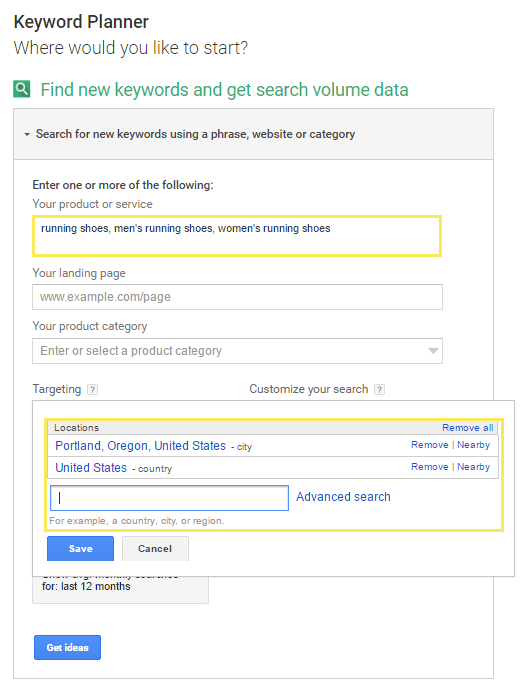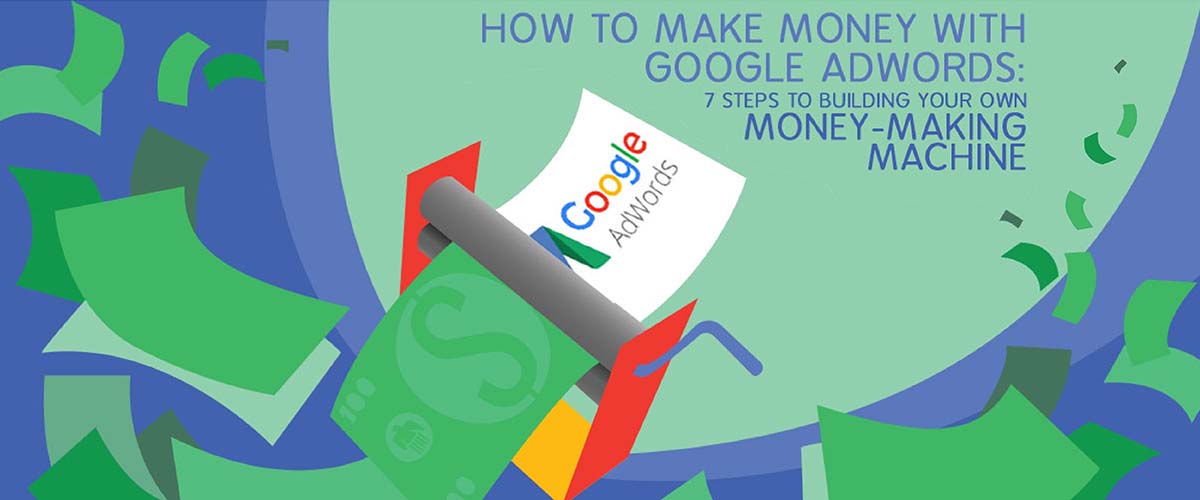Much like the saying “money can’t buy you happiness,” money can’t buy you a profitable AdWords campaign. If only it were that simple.
Dumping more money into an underperforming AdWords account doesn’t bring in revenue.
Constructing your own AdWords money-making machine requires strategy, thoughtful research and consistent maintenance. It comes down to knowing what questions to ask yourself and where to find the answers.
Step 1: Are People Actively Searching for my Product/Service?
The goal of a paid search campaign is to reach individuals seeking out a specific product or service. If people aren’t searching for what you’re offering, paid search isn’t going to work for you…it’s as simple as that.
Don’t panic! Google has gifted us the Keyword Planner to help in times like these. First, adjust the location settings to match your target market. Second, type in search terms people might used to find your product or services. Then, the Google AdWords keyword tool will generate a list of similar keywords. Accompanying those keywords you’ll see their search volume, competition level and estimated cost-per-click.

Step 2: How Much Money Should I Spend on Clicks?
The most common response I hear to this question is, “I have no idea.” So don’t worry, you’re not alone. For small to medium sized businesses, the standard equation is to allocate around 6 percent of gross or projected revenue towards your overall marketing budget. Of that budget, let’s break down a realistic portion to put towards the AdWords campaigns.
While you’ve got the keyword planner pulled up, pay attention to the “suggested bids” column for an estimated cost-per-click (CPC) of the associated keyword. A general rule of thumb is to start with a budget that will allow for a minimum of 5 clicks per day.
For example, you’re a real estate agent in Portland, OR and are trying to generate traffic to your local property listings. Put yourself in your customer’s shoes and type in a few keywords they might use to find your services.
With the appropriate location targeting, the keyword planner will show you that keywords like “portland real estate,” and “homes for sale portland oregon,” have an estimated CPC of about $2.
Now, let’s do some simple math. If one click costs roughly $2, a daily budget of $10 will get us the minimum 5 clicks we want.
$2 x 5 clicks = $10
Based on those numbers, a healthy starting budget would be around $300 per-month. Now, it’s your turn.
Step 3: Are my Goals and Expectations Realistic?
The main goal for most business owners is making money on pay-per-click ads, but the expectation to see extreme results in an extremely short period of time is unrealistic. While turning a profit with AdWords is attainable, creating specific and realistic goals is how we’re able to get the wheels of the money-making machine in motion.
Don’t expect to see instant results. Your campaigns need time to gather data, accompanied by strategic optimization. Rome wasn’t built in a day— same goes for your AdWords account.
AdWords is an investment, and in order to have successful campaigns, you must be willing to understand that it takes time, effort and resources to see your expected return.
Step 4: Is My Keyword List Targeted?
Take a minute to think about your business. How many products and/or services do you have? Perhaps one is more popular than the other or targets a different demographic. You wouldn’t want to throw all of those different offerings into one extensive keyword list, would you? No, you wouldn’t. By doing so, you’re essentially placing the same value on all of your product and/or services, when in fact; they can all measure up quite differently.
Start with what you know already works for your business and capitalize on those strengths in your campaigns. Segment out your campaigns by creating multiple ad groups with lists of specific keywords directly targeting the product or service you wish to show an ad for. This kind of granular structure promotes more relevant traffic, and it will allow you to have much more control over who you want to show your ads to.
Step 5: Is my Landing Page Relevant?
Huzzah, a prospect has clicked your ad! Thanks to your hard work and the granular structure within your account, someone’s needs were met by your ad. The next step in learning how to make money with Google AdWords is bridging the gap between what the prospect wants and what your business can give them. Enter: the landing page.
Too often, I see promising ads sending potential buyers directly to the homepage, leaving buyers lost and having to start their search all over again. Maximize your return by guiding prospects down a relevant path to the exact product or service they initially searched for. Your landing page should act as a funnel, pushing your prospect in the direction you expect them to go. The copy on your landing page should reflect your targeted list of keywords and convey your message clearly.
Step 6: Am I Tracking Conversions?
Conversion tracking gives you the cold, hard, data to measure the performance of your campaigns. Without it, you may as well flush your wallet down the toilet.
Your landing page will guide your prospect down the funnel, so the next step is tracking the goal at the bottom of that funnel. Whether your goal is generating more phone calls, lead forms, sales or all of the above, measuring those conversions will give you a deeper insight to how prospects interact with your ads. Conversion data will give you the proper leverage to make improvements to your marketing campaign, to strengthen overall performance and maximize your return.
![]()
Step 7: Where can my Campaigns use Improvement?
The foundation of your profitable AdWords account has now been set. The last piece of the puzzle is optimization. Actively monitor the data being collected within your account and clean up the areas that need help. Spend time skimming the Search terms report for new and negative keyword opportunities, adjusting bids for keywords and/or devices and ensuring your ad copy holds a clear call-to-action and upholds Google’s best practices.
Most campaigns need time to collect enough data to make educated optimizations, so be patient. This, in turn, will allow you to capitalize on areas in the account that perform well so you can spread your budget more efficiently among your campaigns.
You know what it takes to earn money with Google, so hop to it! Approach your AdWords account with confidence, knowing the campaigns you construct are sure to bring home the bacon.

Logical Position, an Inc. 500 digital agency supporting 5,000+ clients across North America. LP is the proud recipient of Google’s Lead Generation Premier Partner of the Year and Microsoft's Global Channel Partner of the Year 2024! The award-winning agency offers full-service PPC management, SEO, Paid Social, Amazon and Creative Services for businesses large and small. As a Google Premier Partner, Microsoft Elite Partner & Meta Business Partner, LP is in the top 1% of ad spend managed across platforms.



